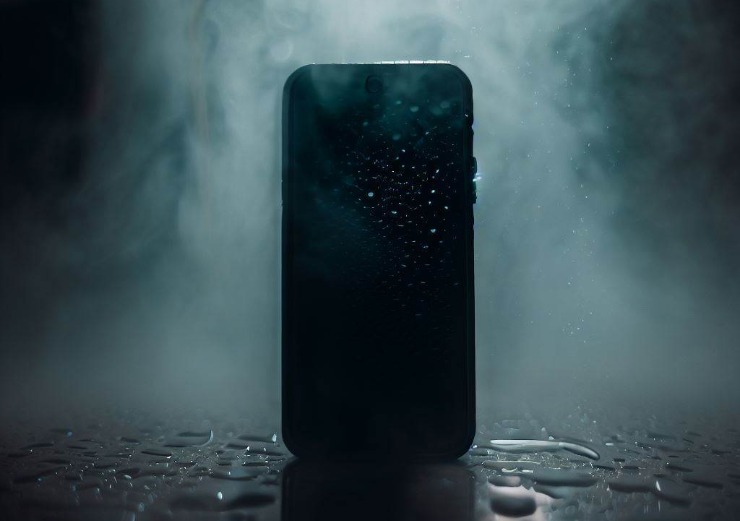Are you one of those people who can’t part with their phone, even in the shower?
If so, you might want to think twice.
In this article, we’ll explore the hidden dangers that shower steam can pose to your beloved device.
Get ready to discover how something as seemingly harmless as steam can put your phone’s lifespan and functionality at risk.

Water Resistance vs. Waterproof
It is important to understand the difference between water resistance and waterproof when it comes to phone safety.
A phone that is water-resistant has been designed to withstand some exposure to water, but it is not completely waterproof.
On the other hand, a phone that is waterproof has been designed to withstand complete submersion in water for a certain period of time.
While water-resistant phones may be able to withstand some exposure to steam, it is not recommended to expose them to high humidity levels for extended periods of time.
Steam has the potential to cause more damage to a phone than liquid water due to its ability to condense inside the device and dissolve contaminants and metals.
When purchasing a phone, it is important to check the device’s IP rating.
This can help you determine the level of exposure to water or steam that the phone can withstand.
However, it is still important to take preventative measures and avoid exposing the phone to unnecessary moisture whenever possible.
How Shower Steam Can Damage Phones?
Most electronic devices have a humidity rating indicating the maximum levels of humidity they can safely operate in.
This typically ranges from 85 to 90 percent. [2]
However, a steamy bathroom during a hot shower can reach 100 percent humidity, pushing your phone beyond its safe operating limits.
Effects of Shower Steam on Your Phone
While showers are essential to our daily hygiene routine, they can pose a significant risk to our electronic devices.
Steam, in particular, can cause damage to our phones in several ways.
- Steam can enter the device and condense inside, leading to the formation of moisture. Over time, this moisture can cause short circuits and corrosion, resulting in irreparable damage to the phone’s internal components.
- Steam can dissolve contaminants and metals inside the phone, which can further exacerbate the damage caused by moisture. This can result in the formation of an acidic, conductive solution that can corrode the phone’s internal components and reduce its lifespan.
- Steam can have a significant impact on the phone’s functionality and lifespan. Over time, the damage caused by steam can lead to a decrease in the phone’s performance, including slower processing speeds, reduced battery life, and an increased risk of system crashes and freezes.
It is essential to take preventative measures to protect your phone from steam damage in the shower.
Keeping your phone in a sealed plastic bag or cling film during showers is one way to prevent steam from entering the device.
Additionally, acclimating the phone to room temperature before unsealing can help prevent the formation of moisture inside the phone.
Phone Components at Risk from Shower Steam Exposure
When a phone is exposed to steam, several components are at risk of damage. These include circuit board elements, solder joints, battery contacts, and display seals.
Circuit board elements and solder joints are particularly vulnerable to steam exposure.
Steam can cause corrosion on these components, which can lead to short circuits and other malfunctions.
Battery contacts can also be damaged by steam, which can lead to battery failure or other issues.
Display seals are another component that can be affected by steam exposure.
When steam enters a phone, it can condense on the display and cause water damage.
This can lead to condensation forming inside the phone, which can cause further damage to the display and other components.
Tips for Handling Water-Damaged Phones
If your phone has been exposed to steam or other forms of water damage, it’s important to act quickly to prevent further damage and increase the chances of salvaging the device.
Here are some tips for handling water-damaged phones:
- Power off the phone immediately: If your phone has been exposed to steam or water, the first thing you should do is turn it off. This will help prevent further damage to the internal components of the device.
- Disassemble the phone: If you are comfortable doing so, disassemble the phone to expose the internal components. This will help speed up the drying process and prevent corrosion.
- Use rice or silica gel: Place the phone and its components in a container filled with rice or silica gel packets. These materials will help absorb moisture and speed up the drying process.
- Wait at least 48 hours: Leave the phone and its components in the rice or silica gel container for at least 48 hours. This will give the materials enough time to absorb as much moisture as possible.
- Reassemble and test the phone: Once the phone and its components are completely dry, reassemble the device and test its functionality. If the phone still doesn’t work, it may be beyond repair.
Frequently Asked Questions
Water or steam damage is usually not covered by a phone warranty unless the phone has a specific water resistance rating and the damage occurred within the specified conditions. Most phone warranties cover only non-accidental damages, which do not include phones damaged by water.
It is not advisable to take a phone to a sauna or a steam room, as the high temperatures and humidity levels can damage the phone and void the warranty. Even if the phone has a water resistance rating, it may not be able to resist the extreme conditions of a sauna or a steam room.

